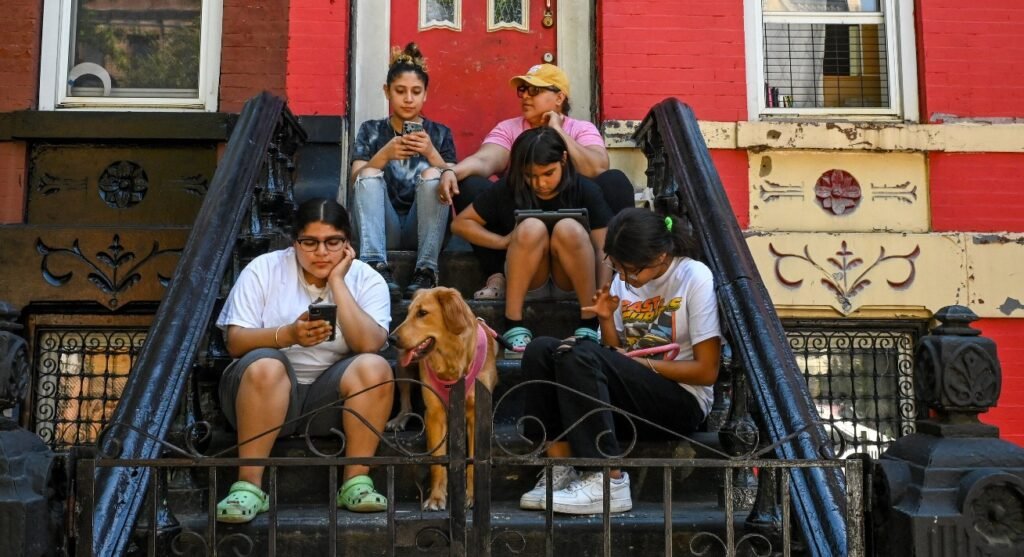Many Americans take high-speed internet access for granted, but for millions of people living in rural areas, it is a luxury they cannot afford or access. According to a report by Microsoft, about 157 million Americans do not use the internet at broadband speeds, which the Federal Communications Commission (FCC) defines as 25 megabits per second for downloads and 3 megabits per second for uploads. This means that they are missing out on the benefits of online education, telehealth, remote work, and entertainment that many urban and suburban residents enjoy.
One of the reasons for this digital divide is the lack of infrastructure and investment in rural broadband. The FCC relies on data from internet service providers (ISPs) to map out where broadband is available, but this data is often inaccurate or outdated. ISPs may claim to serve an entire census block (a geographic unit used by the government) if they can serve just one person in that area, leaving out many potential customers who are unserved or underserved. Moreover, ISPs may not have the incentive to expand their networks to rural areas where the population density is low and the return on investment is uncertain.

Another reason for the digital divide is the high cost of broadband service and equipment. Even if broadband is available in rural areas, many residents may not be able to afford it or the devices needed to access it. According to a Pew Research Center survey, about half of rural Americans say that high-speed internet access is a problem in their area, and 24% say that it is a major problem. Among those who do not have broadband at home, 45% say that it is too expensive, and 22% say that their smartphone is enough for their online needs.
How some rural residents cope with the internet gap
Despite the challenges of accessing high-speed internet, some rural residents have found creative ways to cope with the situation. For example, writer Karie Fugett, who lives on a farm in Oregon, drives to a nearby Taco Bell to use their wi-fi when she needs to do research or correspondence for her work. She says that she does not feel like a professional writer when she does that, but she has no other choice.
Other rural residents rely on public libraries, schools, or community centers that offer free wi-fi or computer access. However, these places may have limited hours, capacity, or resources, and they may not be open during the COVID-19 pandemic. Some people also use mobile hotspots or satellite internet, but these options may have data caps, slow speeds, or unreliable signals.
How the government and other stakeholders are trying to bridge the gap
The federal government has recognized the importance of expanding broadband access to rural areas and has allocated funds and programs to address the issue. For instance, the FCC’s Rural Digital Opportunity Fund aims to provide $20.4 billion over 10 years to support broadband deployment in unserved areas. The fund will use a reverse auction mechanism, where ISPs will bid for subsidies to provide service at different speed tiers.
The U.S. Department of Agriculture also has several initiatives to support rural broadband development, such as the ReConnect Program, which offers loans and grants to eligible entities to build or improve broadband infrastructure. The program has awarded $1.57 billion to 99 projects in 34 states since 20194
In addition, some states, local governments, nonprofits, and cooperatives have taken matters into their own hands and have launched their own broadband projects or partnerships. For example, in Minnesota, a group of counties formed a broadband task force and partnered with a local ISP to apply for state grants and federal loans to extend fiber-optic service to unserved areas. The project has connected more than 1,600 households and businesses so far.
Why broadband access is essential for rural America
Broadband access is not only a matter of convenience or entertainment; it is also a matter of economic opportunity and social equity. Broadband access can enable rural residents to access online education and training, telehealth and telemedicine services, remote work and entrepreneurship opportunities, e-commerce and online banking platforms, civic engagement and social networking tools, and more. These benefits can help rural communities overcome some of the challenges they face, such as population decline, aging demographics, health disparities, income inequality, and environmental issues.
As the COVID-19 pandemic has shown, broadband access is also a matter of public health and safety. Broadband access can help rural residents stay informed about the virus and its prevention measures, access testing and vaccination sites, consult with health care providers remotely, order essential goods and services online, work and learn from home safely, and stay connected with family and friends during isolation.
Therefore, bridging the digital divide between urban and rural America is not only a technical or financial challenge; it is also a moral and political imperative. As FCC Acting Chairwoman Jessica Rosenworcel said, “We need to build a broadband future that serves all Americans, because it’s going to take all of us to solve the challenges of our time”.
